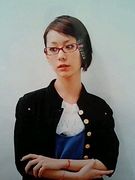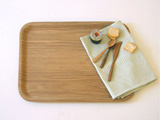通訳案内士(通訳ガイド)試験受験対策<2009年度英語第2次試験の模範解答例(その2)>
━━━━━━━━━━━━━━━━━━━━━━━
<2009年度英語第2次試験の模範解答例(その2)>
━━━━━━━━━━━━━━━━━━━━━━━
●2009年度の試験内容の概観
2009年度の試験は、東京会場(2008年度は2ヶ所であったが2009年度は1ヶ所)、京都会場、福岡会場の計3ヶ所で実施された。その内容は、次のようなものであった。
[1]試験官
試験官は、基本的に、外国人(ネイティブスピーカー)と現役通訳ガイドと思われる人の2名1組で実施された。
試験官の主な担当は次のようなものだった。
(1)外国人:主要な質問をほとんど担当。
(2)現役通訳ガイド:進行役、および時々質問も担当。
[2]試験時間
受験者一人あたり、約5〜8分。
[3]試験内容
(1)最初に、受験者の氏名と住所を質問された。
最も標準的な質問の仕方は下記のようなものである。
Please tell us your name and where you live.
試験官により、Where are you from?と聞かれる場合があるが、自分の出身地ではなく、現在住んでいる場所を答えること。
(2)次に、6種類の問題群から3〜6問の質問がされた。
[4]留意点
2006年度、2007年度、2008年度には歴史的な事柄が必ず出題されていたが、2009年度においてはほとんど聞かれなかった。また、2008年度には日本の飲食物に関する事柄が出題されていたが、2009年度においてはほとんど聞かれなかった。その代わり2009年度においては、年中行事と文化に関する出題が目立っている。
[5]6種類の問題群
時間帯別に6質問1組となる6種類の問題群(計36質問)が用意され、基本的にその問題群から質問がされた。
●2009年度時間帯別問題群と模範解答例
問題群(3)(13:00〜14:00)
(1)日本の気候はどんなものか。
What's Japan's climate like?
The climate of Japan is mostly temperate, but varies greatly from north to south. There are four distinct seasons. With the exception of Hokkaido, most areas have a rainy season from early June to mid-July, followed by a hot, humid summer. Typhoons are common during late summer and early autumn; and except for semitropical Okinawa, many parts of Japan have snow in winter.
(2)東京の中でどこを訪れることを勧めるか。
Where in Tokyo would you recommend I visit?
?I would recommend Meiji Shrine, the largest Shinto shrine in Tokyo. This shrine is dedicated to Emperor Meiji and Empress Shoken, who oversaw Japan's entry into the modern world following the Meiji Restoration of 1868. The shrine buildings are made of Japanese cypress and built in a classic Shinto architectural style that is simple but grand. It is a special oasis in the midst of all the big-city hustle and bustle.
?I would recommend Tokyo Tower in Minato Ward. Having been built in 1958 and molded after the Eiffel Tower in Paris, this 333m structure is a beloved landmark in the city's landscape. The tower boasts two observatories, both of which offer spectacular, panoramic views of Tokyo.
?I would recommend Sensoji Temple in Asakusa. It is dedicated to Kannon, or the Buddhist goddess of mercy, and is therefore popularly called the Asakusa Kannon Temple. This temple is Tokyo's oldest and most popular one, with a history dating from 628. Its colorful Nakamise-Dori, a pedestrian lane leading to the temple, is lined with traditional shops and souvenir stands, and is a great place to buy your gifts as well.
(3)俳句とは何か。
What is Haiku?
Haiku is a very compact but evocative verse form of 17 syllables in a 5-7-5 line pattern. The themes of haiku may be inspired by intuitive perception into nature and life.
(4)日本人の平均余命は何歳か。なぜ日本人は長生きなのか。
What is the average life expectancy of the Japanese? Why do they live so long?
The world's longest life expectancy is in Japan, where the average male lives 79.29 years, and the average female lives 86.05 years (according to data collected in 2008 by the Japanese Ministry of Health, Labor and Welfare). There are several reasons for this longevity. One is the low rate of infant mortality. From 2000 to 2005, the Japanese infant mortality rate was 3.2 per 1,000, which was by far the lowest rate among advanced nations. Other reasons include the establishment of a modern medical system and dietary improvements. The traditional Japanese diet is low in fat and low in calories, but it is also low in animal protein and high in salt. From a nutritional point of view, the modern Japanese diet is quite balanced.
(5)日本の武道について述べよ。
Tell me about Japanese martial arts.
Traditional Japanese martial arts, which are practiced as sports today, include Judo, Karate and Kendo. Judo and Karate are both unarmed self-defense. Judo developed from jujutsu, martial-art styles evolved among the samurai of feudal Japan. Karate originated in China and was developed in Okinawa. Kendo is the Japanese martial art of swordsmanship and is somewhat similar to fencing.
(6)日本の海外貿易について述べよ。
Tell me about Japan's overseas trading. What Japanese products are most dominant abroad?
According to the latest edition of the White Paper on International Trade, the following Japanese products are most dominant abroad: cameras, integral circuits, image scanners, video game consoles, digital cameras, copy machines, and motorcycles. These items have been widely accepted in the world market because of their high quality and competitive prices.
問題群(4)(14:00〜15:00)
(1)日本の四季について、外国人観光客にどのように説明するか。
How would you explain Japan's four seasons to foreign tourists?
The climate of most parts of Japan is characterized by four distinct seasons. The spring months generally are from March to May, summer months are from June to August, autumn from September to November, and winter from December to February. Japan's summer is generally very hot and humid, and winter is generally cold. The difference between winter temperatures and summer temperatures is more than 20 degrees Celsius. In spring and autumn, almost all parts of Japan enjoy comfortable temperatures.
(2)日本を訪れる旅行者の数よりも、日本から海外に行く旅行者の数が遥かに大きいが、どう思うか。
What do you think of the fact that there are far more people going abroad than people coming to Japan?
I think that it is inevitable, because prices in Japan are one of the highest in the world, and also because the yen has been quite strong against major foreign currencies these days. But, at the same time, I think that the Japanese government should further strengthen its publicity campaigns so that Japan can attract even more foreign tourists. The Japan National Tourism Organization and the Japanese government have been trying hard to increase the annual number of foreign travelers to Japan to 10 million by the year 2010. I really hope that this policy will work out and that it will have a positive effect on our society.
(3)義理とは何か。
What is Giri?
Giri refers to the sense of social obligation which every individual is supposed to develop in life.
(4)相撲とは何か。
What is Sumo?
Sumo is the time-honored Japanese style of wrestling. Two contestants are matched against one another in a ring. One contestant loses when any part of his body other than the soles of his feet touches the ground or when he is pushed out of the ring.
(5)日本の子供はなぜ塾に通うのか。
Why do Japanese children go to cram schools?
In Japan, many children go to juku, or cram schools, because entrance to top schools is so competitive that students must do extra study. Many parents want their children to attend prestigious universities so that they can later join prestigious companies.
(6)もし交通渋滞の中、ツアーバスの乗客の女性がトイレに行きたいと言ってきたら、通訳ガイドとしてどうするのか。
What would you do as a tour guide, if a woman on your tour bus says that she wants to go to the restroom in a traffic jam?
I would ask her to hold on for a moment and ask the bus driver to find the nearest bathroom or rest-stop area. If the traffic is jammed solid and the bus doesn't move at all, I may walk her or run with her to the nearest bathroom. In that case, I will make sure to keep in contact with the bus driver or other passengers by cell phone so that they can pick us up later.
━━━━━━━━━━━━━━━━
●<ハローの合格必勝教材>のお申込み:
http://
━━━━━━━━━━━━━━━━
━━━━━━━━━━━━━━━━━━━━━━━
<2009年度英語第2次試験の模範解答例(その2)>
━━━━━━━━━━━━━━━━━━━━━━━
●2009年度の試験内容の概観
2009年度の試験は、東京会場(2008年度は2ヶ所であったが2009年度は1ヶ所)、京都会場、福岡会場の計3ヶ所で実施された。その内容は、次のようなものであった。
[1]試験官
試験官は、基本的に、外国人(ネイティブスピーカー)と現役通訳ガイドと思われる人の2名1組で実施された。
試験官の主な担当は次のようなものだった。
(1)外国人:主要な質問をほとんど担当。
(2)現役通訳ガイド:進行役、および時々質問も担当。
[2]試験時間
受験者一人あたり、約5〜8分。
[3]試験内容
(1)最初に、受験者の氏名と住所を質問された。
最も標準的な質問の仕方は下記のようなものである。
Please tell us your name and where you live.
試験官により、Where are you from?と聞かれる場合があるが、自分の出身地ではなく、現在住んでいる場所を答えること。
(2)次に、6種類の問題群から3〜6問の質問がされた。
[4]留意点
2006年度、2007年度、2008年度には歴史的な事柄が必ず出題されていたが、2009年度においてはほとんど聞かれなかった。また、2008年度には日本の飲食物に関する事柄が出題されていたが、2009年度においてはほとんど聞かれなかった。その代わり2009年度においては、年中行事と文化に関する出題が目立っている。
[5]6種類の問題群
時間帯別に6質問1組となる6種類の問題群(計36質問)が用意され、基本的にその問題群から質問がされた。
●2009年度時間帯別問題群と模範解答例
問題群(3)(13:00〜14:00)
(1)日本の気候はどんなものか。
What's Japan's climate like?
The climate of Japan is mostly temperate, but varies greatly from north to south. There are four distinct seasons. With the exception of Hokkaido, most areas have a rainy season from early June to mid-July, followed by a hot, humid summer. Typhoons are common during late summer and early autumn; and except for semitropical Okinawa, many parts of Japan have snow in winter.
(2)東京の中でどこを訪れることを勧めるか。
Where in Tokyo would you recommend I visit?
?I would recommend Meiji Shrine, the largest Shinto shrine in Tokyo. This shrine is dedicated to Emperor Meiji and Empress Shoken, who oversaw Japan's entry into the modern world following the Meiji Restoration of 1868. The shrine buildings are made of Japanese cypress and built in a classic Shinto architectural style that is simple but grand. It is a special oasis in the midst of all the big-city hustle and bustle.
?I would recommend Tokyo Tower in Minato Ward. Having been built in 1958 and molded after the Eiffel Tower in Paris, this 333m structure is a beloved landmark in the city's landscape. The tower boasts two observatories, both of which offer spectacular, panoramic views of Tokyo.
?I would recommend Sensoji Temple in Asakusa. It is dedicated to Kannon, or the Buddhist goddess of mercy, and is therefore popularly called the Asakusa Kannon Temple. This temple is Tokyo's oldest and most popular one, with a history dating from 628. Its colorful Nakamise-Dori, a pedestrian lane leading to the temple, is lined with traditional shops and souvenir stands, and is a great place to buy your gifts as well.
(3)俳句とは何か。
What is Haiku?
Haiku is a very compact but evocative verse form of 17 syllables in a 5-7-5 line pattern. The themes of haiku may be inspired by intuitive perception into nature and life.
(4)日本人の平均余命は何歳か。なぜ日本人は長生きなのか。
What is the average life expectancy of the Japanese? Why do they live so long?
The world's longest life expectancy is in Japan, where the average male lives 79.29 years, and the average female lives 86.05 years (according to data collected in 2008 by the Japanese Ministry of Health, Labor and Welfare). There are several reasons for this longevity. One is the low rate of infant mortality. From 2000 to 2005, the Japanese infant mortality rate was 3.2 per 1,000, which was by far the lowest rate among advanced nations. Other reasons include the establishment of a modern medical system and dietary improvements. The traditional Japanese diet is low in fat and low in calories, but it is also low in animal protein and high in salt. From a nutritional point of view, the modern Japanese diet is quite balanced.
(5)日本の武道について述べよ。
Tell me about Japanese martial arts.
Traditional Japanese martial arts, which are practiced as sports today, include Judo, Karate and Kendo. Judo and Karate are both unarmed self-defense. Judo developed from jujutsu, martial-art styles evolved among the samurai of feudal Japan. Karate originated in China and was developed in Okinawa. Kendo is the Japanese martial art of swordsmanship and is somewhat similar to fencing.
(6)日本の海外貿易について述べよ。
Tell me about Japan's overseas trading. What Japanese products are most dominant abroad?
According to the latest edition of the White Paper on International Trade, the following Japanese products are most dominant abroad: cameras, integral circuits, image scanners, video game consoles, digital cameras, copy machines, and motorcycles. These items have been widely accepted in the world market because of their high quality and competitive prices.
問題群(4)(14:00〜15:00)
(1)日本の四季について、外国人観光客にどのように説明するか。
How would you explain Japan's four seasons to foreign tourists?
The climate of most parts of Japan is characterized by four distinct seasons. The spring months generally are from March to May, summer months are from June to August, autumn from September to November, and winter from December to February. Japan's summer is generally very hot and humid, and winter is generally cold. The difference between winter temperatures and summer temperatures is more than 20 degrees Celsius. In spring and autumn, almost all parts of Japan enjoy comfortable temperatures.
(2)日本を訪れる旅行者の数よりも、日本から海外に行く旅行者の数が遥かに大きいが、どう思うか。
What do you think of the fact that there are far more people going abroad than people coming to Japan?
I think that it is inevitable, because prices in Japan are one of the highest in the world, and also because the yen has been quite strong against major foreign currencies these days. But, at the same time, I think that the Japanese government should further strengthen its publicity campaigns so that Japan can attract even more foreign tourists. The Japan National Tourism Organization and the Japanese government have been trying hard to increase the annual number of foreign travelers to Japan to 10 million by the year 2010. I really hope that this policy will work out and that it will have a positive effect on our society.
(3)義理とは何か。
What is Giri?
Giri refers to the sense of social obligation which every individual is supposed to develop in life.
(4)相撲とは何か。
What is Sumo?
Sumo is the time-honored Japanese style of wrestling. Two contestants are matched against one another in a ring. One contestant loses when any part of his body other than the soles of his feet touches the ground or when he is pushed out of the ring.
(5)日本の子供はなぜ塾に通うのか。
Why do Japanese children go to cram schools?
In Japan, many children go to juku, or cram schools, because entrance to top schools is so competitive that students must do extra study. Many parents want their children to attend prestigious universities so that they can later join prestigious companies.
(6)もし交通渋滞の中、ツアーバスの乗客の女性がトイレに行きたいと言ってきたら、通訳ガイドとしてどうするのか。
What would you do as a tour guide, if a woman on your tour bus says that she wants to go to the restroom in a traffic jam?
I would ask her to hold on for a moment and ask the bus driver to find the nearest bathroom or rest-stop area. If the traffic is jammed solid and the bus doesn't move at all, I may walk her or run with her to the nearest bathroom. In that case, I will make sure to keep in contact with the bus driver or other passengers by cell phone so that they can pick us up later.
━━━━━━━━━━━━━━━━
●<ハローの合格必勝教材>のお申込み:
http://
━━━━━━━━━━━━━━━━
|
|
|
|
|
|
|
|
ハロー通訳アカデミー 更新情報
-
最新のアンケート
-
まだ何もありません
-
ハロー通訳アカデミーのメンバーはこんなコミュニティにも参加しています
人気コミュニティランキング
- 1位
- お洒落な女の子が好き
- 90012人
- 2位
- 写真を撮るのが好き
- 208278人
- 3位
- 暮らしを楽しむ
- 75464人
























